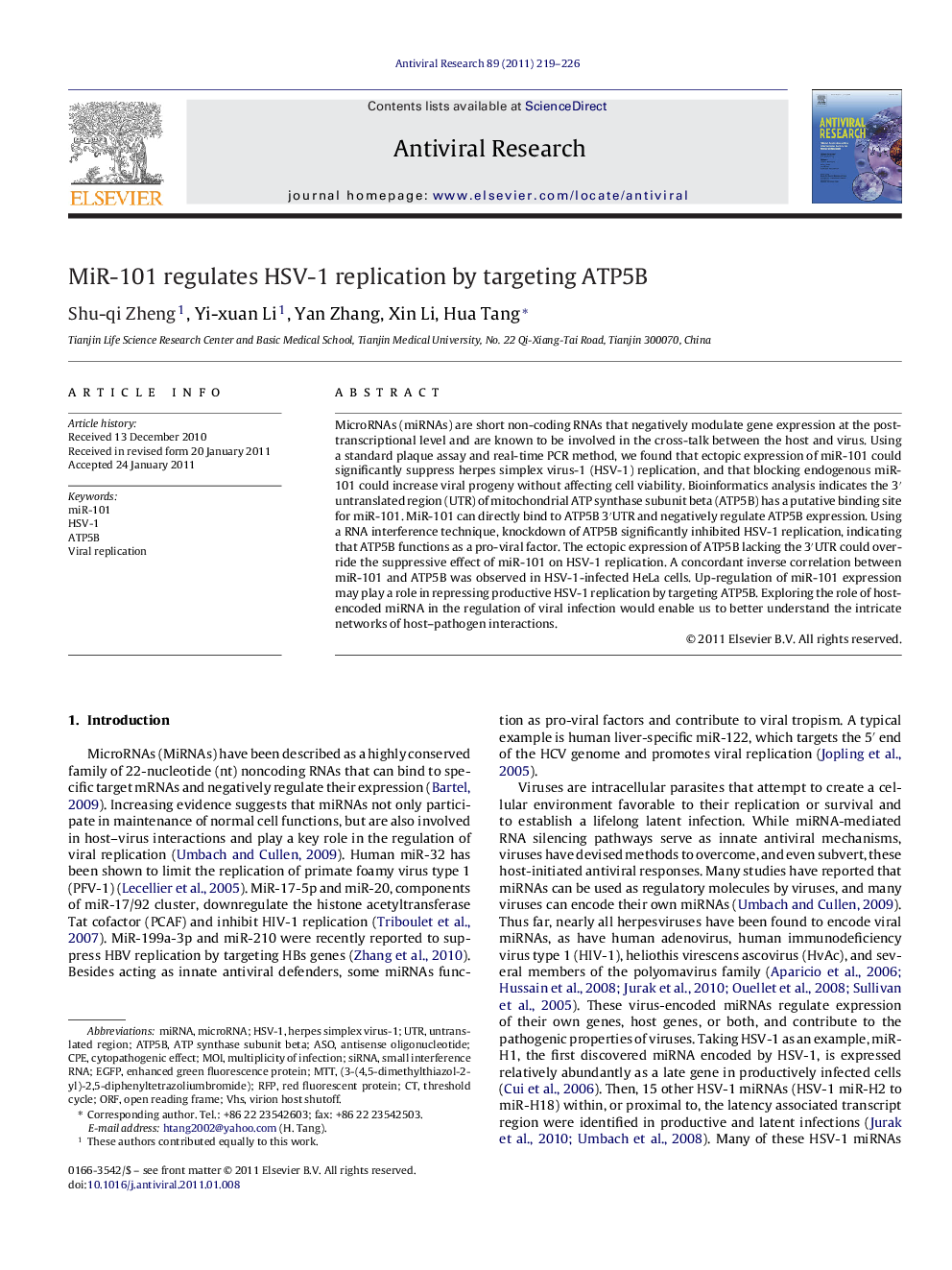| Article ID | Journal | Published Year | Pages | File Type |
|---|---|---|---|---|
| 2510416 | Antiviral Research | 2011 | 8 Pages |
MicroRNAs (miRNAs) are short non-coding RNAs that negatively modulate gene expression at the post-transcriptional level and are known to be involved in the cross-talk between the host and virus. Using a standard plaque assay and real-time PCR method, we found that ectopic expression of miR-101 could significantly suppress herpes simplex virus-1 (HSV-1) replication, and that blocking endogenous miR-101 could increase viral progeny without affecting cell viability. Bioinformatics analysis indicates the 3′ untranslated region (UTR) of mitochondrial ATP synthase subunit beta (ATP5B) has a putative binding site for miR-101. MiR-101 can directly bind to ATP5B 3′UTR and negatively regulate ATP5B expression. Using a RNA interference technique, knockdown of ATP5B significantly inhibited HSV-1 replication, indicating that ATP5B functions as a pro-viral factor. The ectopic expression of ATP5B lacking the 3′UTR could override the suppressive effect of miR-101 on HSV-1 replication. A concordant inverse correlation between miR-101 and ATP5B was observed in HSV-1-infected HeLa cells. Up-regulation of miR-101 expression may play a role in repressing productive HSV-1 replication by targeting ATP5B. Exploring the role of host-encoded miRNA in the regulation of viral infection would enable us to better understand the intricate networks of host–pathogen interactions.
